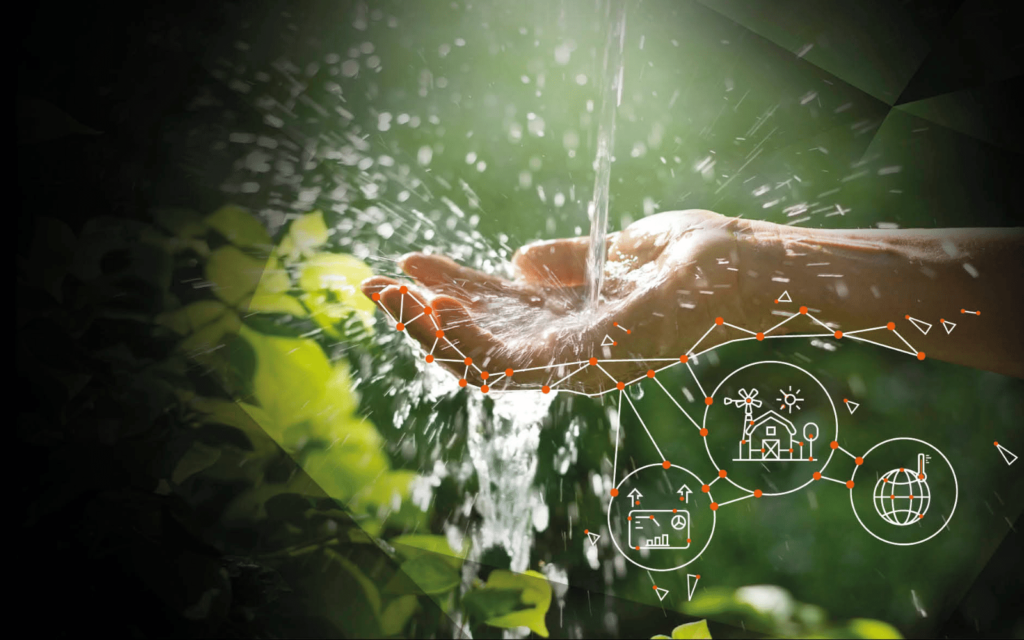Throughout the world, climate change impacts our earth with extreme droughts, storms and flooding. This also affects source water quality and sea levels rising. In short, we need to adapt our traditional ways of managing water to alleviate the negative impact of climate change. Fourth Industrial Revolution technology (4IR) can assist.
How extreme weather can be spotted timeously with 4IR Tech
Although adverse weather cannot be averted, knowing to a higher degree of accuracy when and where severe weather can be expected helps with prevention and recovery. The advanced 4IR technologies play a significant role in modern weather pattern detection.
A leader in the field is IBM. The company’s Global High-Resolution Atmospheric Forecasting System (IBM GRAF) “helps democratize weather forecasts so people, businesses and governments — anywhere — can make better decisions”.
IBM says its system can predict conditions up to 12 hours in advance and covers parts of the world which have not had access to such detailed data. Regions covered include Asia, Africa and South America, in addition to Europe and North America. Impressively, IBM says other global weather models cover 10 – 15 kilometres squared and are updated every six to 12 hours. IBM’s system will forecast down to 3 km squared and update hourly.
“The enhanced forecasts could be revolutionary for some areas of the world, such as for a rural farmer in India or Kenya,” believes Cameron Clayton, head of The Weather Company, a subsidiary of IBM.
“If you’ve never before had access to high-resolution weather data but could now anticipate thunderstorms before they approach your fields, you can better plan for planting or harvesting,” he enthuses.
Watch this informative video about what the Weather Company calls “Democratizing the World’s Weather Data”.
In South Africa, we can hold our own when it comes to using advanced technology for more accurate weather forecasting. As “the only World Meteorological Organization (WMO)-designated long-range global modelling centre in Africa”, the South African Weather Service (SAWS) is a long-term user of a powerful Cray supercomputer, giving it advanced weather modelling capability.
Read More: How recycling and reforestation are advanced with 4IR Tech
The US Trade and Development Agency says: “South Africa has one of the world’s most effective weather forecasting and warning systems, providing accurate and important information to millions of citizens and strengthening climate resilience for a wide range of industries from agriculture to aviation.”
Practically, supercomputers such as the SAWS Cray runs complicated artificial intelligence (AI) and other programmes that use numerous data sets collected from a myriad network of observational weather stations. In South Africa, these can be as sophisticated as the Global Atmosphere Watch Station at Cape Point or as straightforward as the country’s 47 weather buoys in the South Atlantic and South Indian Oceans.
The trick is to assemble and analyse a multitude of separate data points and mix all of these into a whole that provides the basis of automated, scientifically sound and accurate weather predictions, all at lightning speed. It is thus fair to say that weather prediction, especially early warning of disastrous-level events cannot be done without the sophistication of 4IR Tech.
In simple terms, with these ever more powerful computational capabilities, 4IR Tech can literally save lives by enabling early detection of weather to watch.
Water and technology do mix
Climate change throughout the world impacts water management in the following ways: Droughts, storms and flooding, source water quality, sea level rise and because of the need for “general utility preparedness”. In short, we need to adapt our traditional ways of managing water to alleviate the negative impact of climate change. Technology can assist.
Apart from the civil infrastructure required to manage water in the climate change era, monitoring water for early detection of upcoming problems such as leakage of potable water is helped through technologies such as “smart monitoring”.
In the article “The new water technologies that could save the planet” published in The Guardian, Dale Hartley, director of business development at SebaKMT, a water leak detection specialist, extols the virtues of leak prevention: “It does not make commercial sense to invest billions in additional reservoirs and water catchment, treatment plants [and] pumping stations, when as much as 60% of water produced is unaccounted for.”
Intelligent systems using Internet of Things (IoT) smart connections can now provide early leakage warnings using a variety of linked electronic instruments such as pressure and acoustic sensors.
In South Africa, innovative water management companies such as Cape Town-based Smart-View Technology use 4IR Tech including IoT, to help businesses and individuals manage water better. The company says its “Smart-View Utilities enable industrial, residential and retail customers to reduce wastewater and become energy efficient through actionable insights and early anomaly detection with the use of machine learning.
After the water scarcity crisis caused by severe drought in Cape Town in 2018, Virgin Active gyms continued to use advanced technology IoT devices powered by Smart-View Technology to understand their water usage patterns. “This also helped discover leaks and inefficiencies that were not evident before. Using this data Virgin-Active could set a baseline threshold on each gym and monitor water usage during non-operational hours.”
Apart from monitoring, water management is improved through 4IR Tech with processes such as thermal hydrolysis. According to the United States Environmental Protection Agency (EPA), DC Water was the first plant in North America to adopt the process.
“Using this process creates biogas and has enabled DC Water’s Blue Plains Advanced Treatment Plant to generate 10 megawatts of electricity, which is about one-third of the plant’s energy requirement.”
So, not only is water management more efficient if treated in new and innovative ways, but it can also generate clean energy at the same time. Now that’s what we call 4IR Tech at work to help alleviate climate change.
Visit uj.ac.za/4ir and tune in to the next UJ Cloudebate™ to learn more.




